Affiliate links on Android Authority may earn us a commission. Learn more.
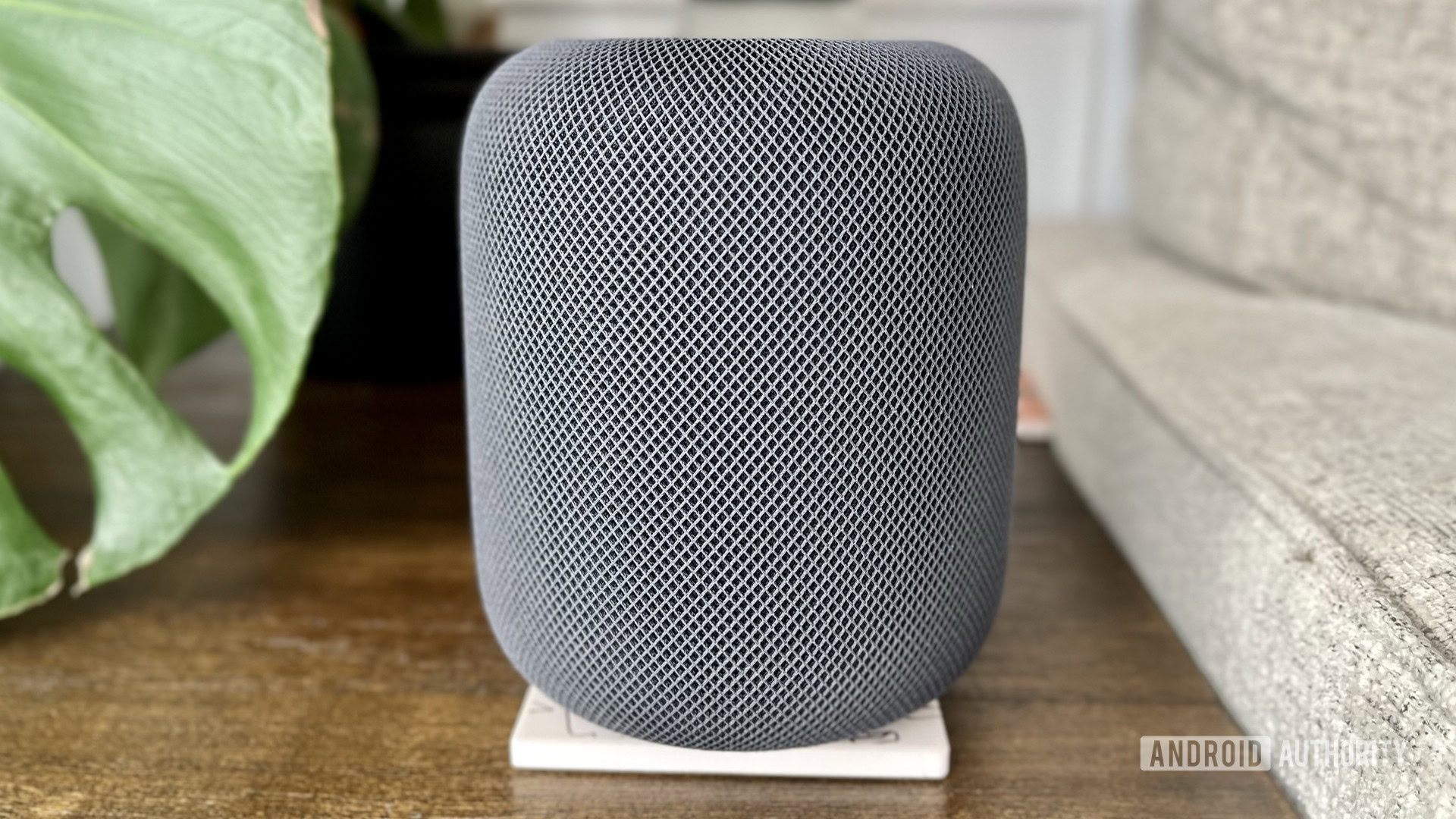


Apple HomePod (2nd generation)
What we like
What we don't like

Apple HomePod (2nd generation)
The original 2018 HomePod was a rare example of an Apple flop — price cuts weren’t enough to save it from being discontinued in March 2021. However, the HomePod Mini, launched in November 2020, was seemingly successful enough that it convinced Apple to give a full-sized smart speaker a second shot. But does the HomePod 2 justify its existence? Find out in this HomePod (2nd generation) review.
What you need to know about the Apple HomePod (2nd generation)
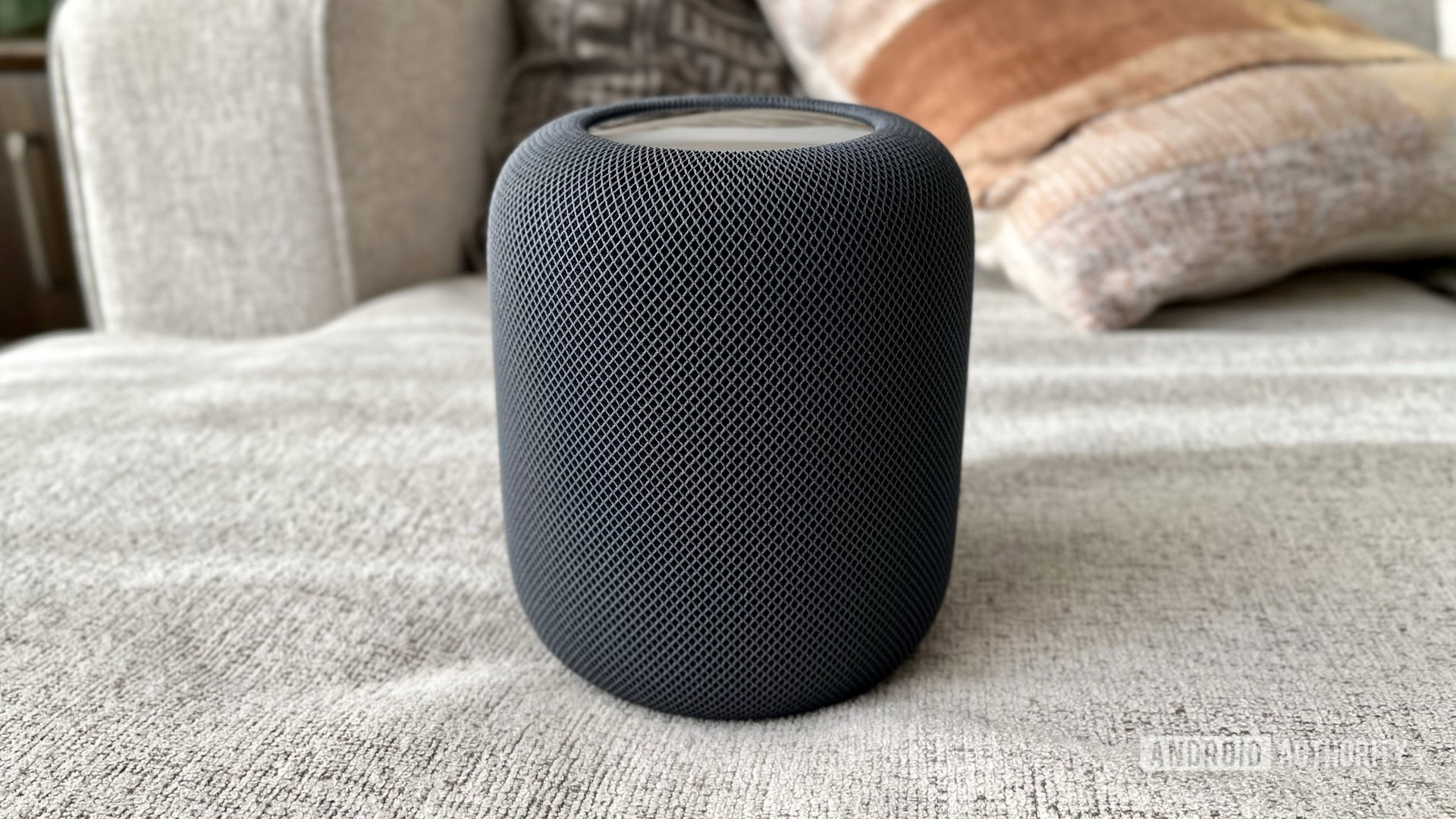
- Apple HomePod (2nd generation): $299 / £299 / €349
The new HomePod is Apple’s top-of-the-line smart speaker, equipped with five tweeters, a 4-inch high-excursion woofer, and four microphones for picking up Siri voice commands. It supports spatial audio with Dolby Atmos, and automatically tunes itself to room acoustics when you move it. An additional internal mic is used to tune bass response.
Design-wise, it’s similar to the original HomePod, but there are some key differences. The HomePod (2nd generation) has two fewer tweeters and two fewer Siri mics, which may be excused by the lower asking price — the 1st gen HomePod started at $349. It’s marginally smaller as well, at 6.6 inches tall versus 6.8, and its touch control/response light panel has been recessed. The power cord is now detachable in case you need a replacement, and its processor has been upgraded from an A8 to an S7 (the chip in the Apple Watch Series 7).
Color options include White and Midnight shades, the latter similar to the pure black for the original, except that it’s silvery in bright light. If you pick White, be sure to put some sort of protection under the base — while I tested the Midnight color, reports say that Apple still hasn’t solved the tendency of white HomePods to stain wood surfaces.
The latest HomePod adopts a more compact design and loses two tweeters and mics, but adds things like Matter, Thread, and built-in temperature and humidity sensors.
Feature-wise, the HomePod 2 has gained temperature and humidity sensors, out-of-the-box Matter support, and a Thread radio for connecting compatible accessories. Since both Matter and Thread are only just picking up steam, the extra sensors may be the most (immediately) relevant smart home addition, enabling climate-based HomeKit automations without a separate sensor, such as triggering a fan or dehumidifier. If you like, though, you can just ask Siri about the temperature or humidity of the room your HomePod is in.
Speaking of Siri, it’s worth reiterating that HomePods are for Apple users only. You need an iPhone or iPad for setup, and settings are managed via the Apple Home app. Likewise, while you can use Siri voice control for a few third-party music/podcast services such as Pandora, Deezer, and TuneIn, it defaults to Apple Music and Apple Podcasts, and Spotify remains conspicuously absent. There are workarounds to listen to Spotify on a HomePod, but you’ll have to use AirPlay casting every time.
If you are immersed in the Apple ecosystem, note that the HomePod is one of a handful of devices that can act as a HomeKit hub for managing automations, Matter, and remote access. You can also pair one or two HomePods with an Apple TV 4K for wireless TV audio. The latter’s HDMI ARC or eARC allows HomePods to output all of your TV’s audio.
The Apple HomePod (2nd generation) is available to buy from Apple, Best Buy, and selected other major retailers.
What’s good?
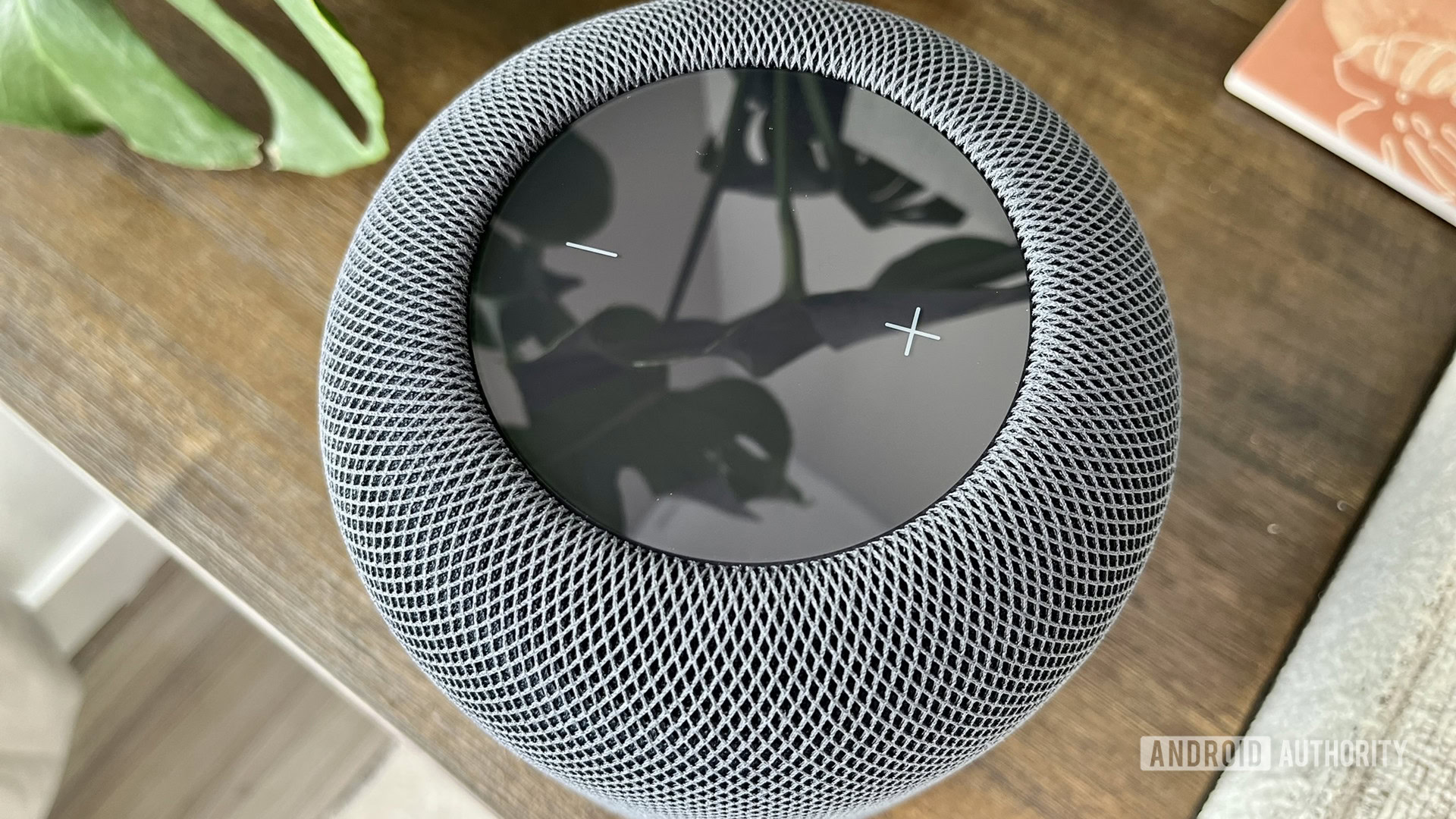
Despite dropping two tweeters, the HomePod (2nd generation) sounds fantastic. Music, podcasts, and Siri exchanges are almost uniformly loud and clear, thanks partly to the automatic room tuning. Bass, meanwhile, is surprisingly powerful — running the 16.3.2 software, it’s better at shaking desks than Amazon’s Echo Studio. You can tone the booming sound down using a Reduce Bass option, but I doubt most people will want to, some issues notwithstanding. We’ll touch on those later.
The HomePod sounds even better when playing something with Dolby Atmos support. A single speaker can’t deliver true surround sound, of course, but Atmos does produce a more immersive soundstage. This expands further if you can afford $600 for a stereo pair of 2nd gen HomePods. If there’s a catch, it’s the limited amount of Atmos content out there. When you’re not playing Atmos-compatible video on an Apple TV, you’ll probably be searching for spatial audio tracks on Apple Music, and most music hasn’t been enhanced. You might be able to find pop acts like Pink or Paramore using the format, for example, but I couldn’t say the same for some of my more obscure favorites like Raison d’etre or A Winged Victory for the Sullen.
The Apple HomePod (2nd generation) is loud, clear, and bass-heavy, and merges neatly into the Apple ecosystem.
When things are firing on all cylinders, Apple’s ecosystem integration is an advantage. The Apple Home app makes settings simple, and when media is playing, you’ll get lockscreen controls on your iPhone, with the option to pull or push audio when you bring your phone near the HomePod’s top. You can also switch outputs using AirPlay controls on any device.
For all its weaknesses, meanwhile, Siri can still handle essential commands and lets you control your HomePod, both directly and from any linked Apple device. Indeed, the HomePod supports up to six voice profiles used to personalize music, messages, and other data like calendars and reminders, as long as everyone is a member of the same HomeKit home.
Aesthetically the product may be the most attractive smart speaker on the market, short of luxe options from audiophile brands like Bang & Olufsen and Devialet. That’s subjective, naturally, and doesn’t really matter on a practical level, but the HomePod should fit as seamlessly into a home theater as it does into an office or kitchen.
What’s not so good?
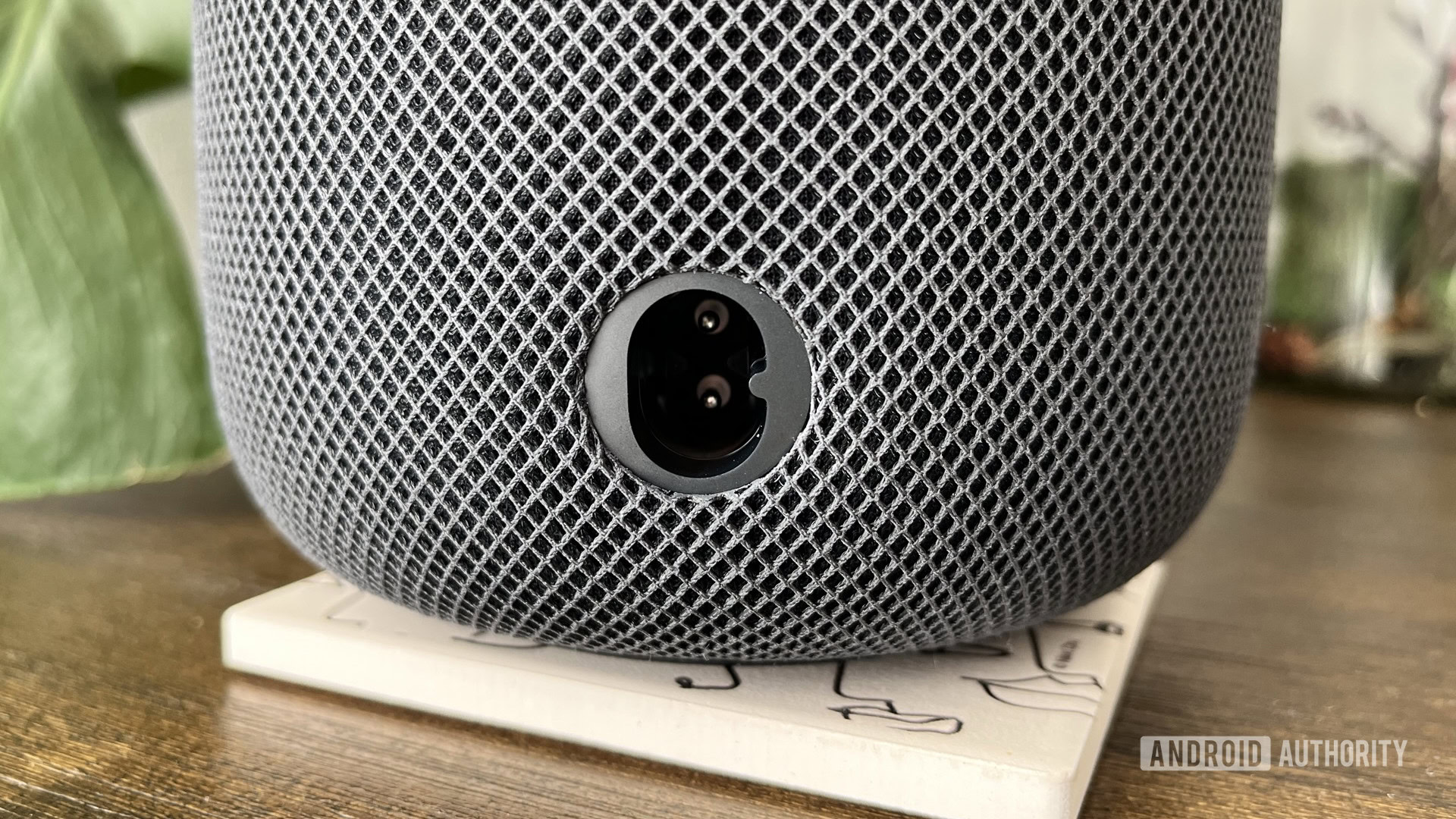
Though bass and audio quality are superb, the HomePod (2nd generation) can struggle with mids and highs. Occasionally those parts of the spectrum sound flat or overly crisp on the HomePod, as if Apple is prioritizing clarity above everything else. At the same time, bass is so powerful that it can potentially drown out other elements. Some of this appears to be linked to changes in the 16.3.2 software update, so it’s possible sound will be more balanced by the time you read this.
As with previous HomePods, one big issue is the dependence on Siri. It’s simply an inferior voice assistant next to Amazon Alexa or Google Assistant, with fewer abilities and outside service hooks, and a greater tendency to misinterpret a command or fail to respond. That means a HomePod is often best controlled via AirPlay or an Apple TV.
The biggest issues that continue to plague the HomePod line are a reliance on the underbaked Siri assistant and narrow platform support.
However, the dealkiller for many people will be the narrow platform support. The HomePod 2 simply won’t work without an iPhone or iPad running HomeKit, and if you do have one, native voice control is missing not just for Spotify, but for other major music services like Tidal, Amazon Music, and YouTube Music. There’s a good chance you’ll have to add or switch to Apple Music if you don’t want to sacrifice voice-controlled playback. Heck, it doesn’t even support Spotify Connect unless you’re using that on an Apple device. There is a cheaper, Siri-only Voice Plan for Apple Music, but you lose access to Atmos and lossless content.
A further limitation is the absence of HDMI, a 3.5mm headphone jack, and an optical port, or audio-capable Bluetooth connections. Likewise, there’s no way of tethering it to a TV without an Apple TV 4K, never mind streaming from non-Apple phones and computers, the exception being Windows PCs via iTunes. The lack of ports reflects a broader trend in smart speakers and displays — yet alternatives are still available if wired or Bluetooth support matters to you.
Apple HomePod (2nd generation) review: The verdict
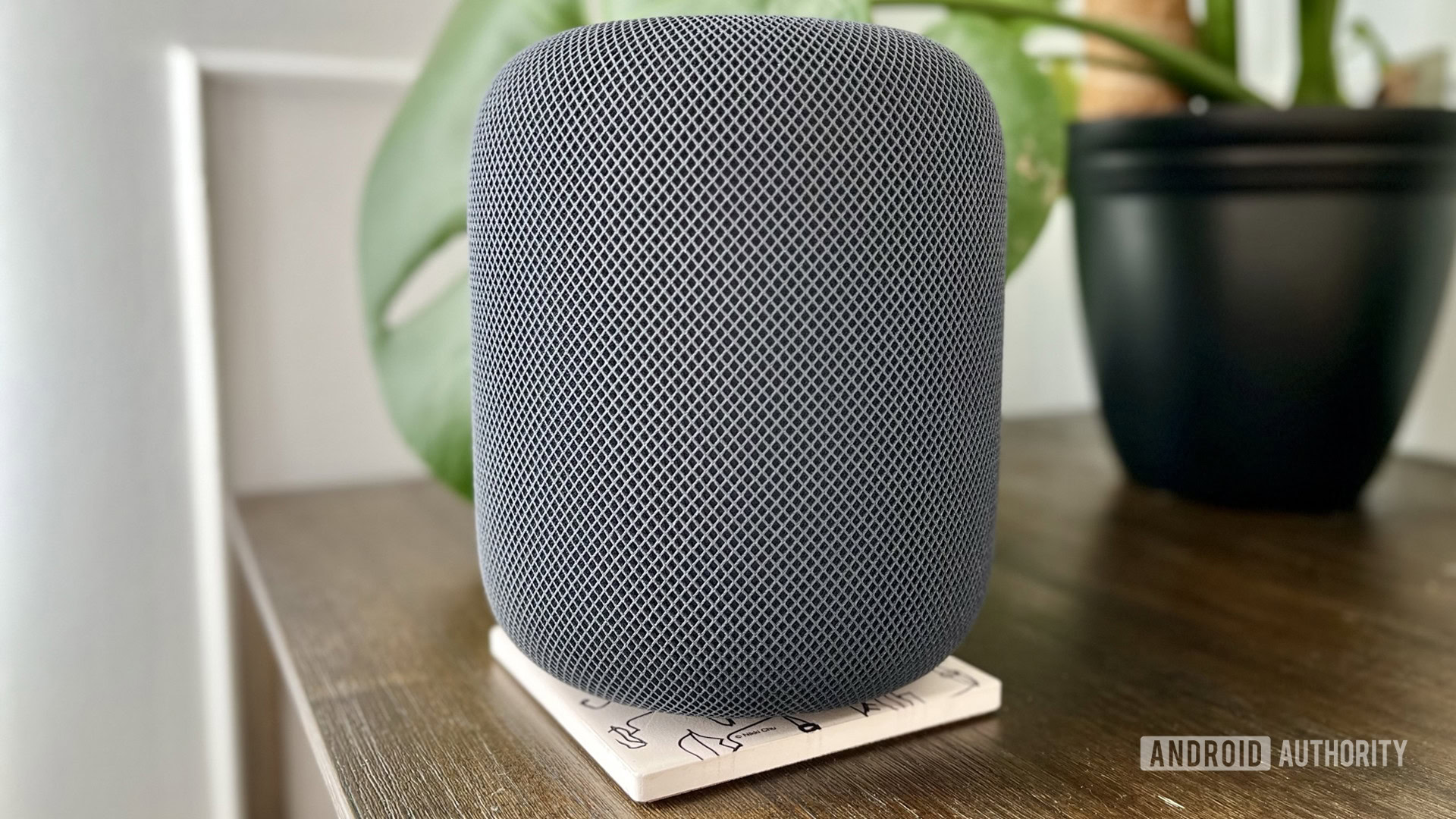
For those who understand and accept its limitations, the new HomePod won’t disappoint. It’s loud, earthshaking, and integrates seamlessly into an Apple home, especially if you’re all-in on HomeKit as a smart home platform.
What’s hard to comprehend is why Apple decided to resurrect the full-sized HomePod with relatively few upgrades. It’s true that increased Apple Music, Apple TV, and HomePod Mini adoption has probably paved a better foundation for it, but sales can only extend so far without supporting Spotify or more third-party devices. Likewise, Siri’s enhancements since 2018 have been barely enough to stay relevant, let alone top Alexa or Google Assistant. Most people will probably be better served by the multi-platform Sonos One ($175 at Sonos) or the Alexa-based Echo Studio ($199 at Amazon), the latter of which also offers superior sound based on our testing.
While there's room for improvement, Apple users who understand and accept its limitations, the HomePod (2nd generation) won't disappoint.
It could be that Apple needs a full-sized speaker not just to compete with Amazon and Google, but as the basis for a renewed push into smart home tech after the October 2022 launch of Matter (Apple being a primary backer). Every HomeKit setup needs a hub and Matter controller, and while you can use an Apple TV or the more affordable HomePod Mini ($99.99 at Best Buy) for that purpose, a speaker with killer sound will have obvious appeal.
To me, then, it seems that beyond Apple Music diehards, the target audiences for the HomePod (2nd generation) are people building out a HomeKit home, and/or people who love their Apple TV 4K so much that they’re willing to buy a couple of HomePods for wireless Dolby Atmos. Those buyers can knock themselves out — but for the rest of us, there are wiser smart speaker options out there.


Top Apple HomePod (2nd generation) questions and answers
The main differences between the HomePod 2 and the original HomePod are the size, feature set, and speaker arrangement. The 2nd gen HomePod is shorter, thinner, and lighter than the first HomePod. The newer HomePod also offers Matter support out of the box and has integrated temperature and humidity sensors. The original HomePod technically had two more tweeters and mics than the 2nd gen HomePod, but both deliver great audio performance.
Apple says that software support will continue for the first HomePod despite the speaker being replaced. The biggest feature gap is that you can’t combine 1st and 2nd gen HomePods into a stereo pair.
We haven’t had a chance to test this exact scenario, but having heard the products individually, we’d probably give the edge to the new HomePod unless stereo panning is just that important to you. We like the Mini a lot, but a full-sized HomePod is louder and delivers punchier bass.